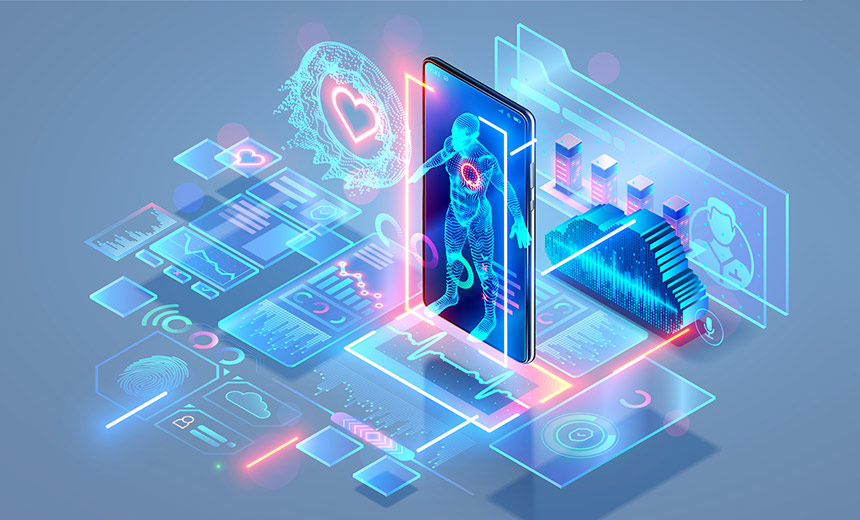AI is playing a bigger role in cybersecurity, but the bad guys may benefit the most

“Security experts have noted that AI-generated phishing emails actually have
higher rates of being opened — [for example] tricking possible victims to click
on them and thus generate attacks — than manually crafted phishing emails,”
Finch said. “AI can also be used to design malware that is constantly changing,
to avoid detection by automated defensive tools.” Constantly changing malware
signatures can help attackers evade static defenses such as firewalls and
perimeter detection systems. Similarly, AI-powered malware can sit inside a
system, collecting data and observing user behavior up until it’s ready to
launch another phase of an attack or send out information it has collected with
relatively low risk of detection. ... But Finch said, “Given the economics of
cyberattacks — it’s generally easier and cheaper to launch attacks than to build
effective defenses — I’d say AI will be on balance more hurtful than helpful.
Caveat that, however, with the fact that really good AI is difficult to build
and requires a lot of specially trained people to make it work well. Run of the
mill criminals are not going to have access to the greatest AI minds in the
world.”
Cybersecurity’s Too Important To Have A Dysfunctional Team
With such difficulty recruiting and maintaining staff, one option businesses
should consider is training and reskilling programmes for existing staff to help
bridge the gap. Current cybersecurity professionals can solidify what they
already know and stay up to date on the latest learnings. Along with
cybersecurity professionals, other technology professionals can be trained and
recruited into these roles. Technology professionals are likely to have an
affinity for the types of skills needed to succeed in cybersecurity.
Non-technical people by background, may still be able to learn what is needed to
perform in these roles, especially if businesses are willing to invest and cover
the cost of the training. When there is a skills shortage, as is currently the
case, and when vacancies outstrip the available talent, organisations need to be
prepared to be imaginative in finding solutions. Alongside this, arming all
teams, regardless of their skills and experience, with the right tools and
support is essential. Working with knowledgeable and trusted partners can help
outsource some of the work and offset any skills gaps as the external partner
becomes an extension of the in-house team.
How Sweden goes about innovating

The innovation agency functions much like its counterparts in other countries,
similarly to the Finnish Funding Agency for Technology and Innovation (Tekes) in
neighbouring Finland, and to the part of the US National Science Foundation
(NSF) that does seed funding on the other side of the Atlantic. The Swedish
government gives Vinnova more than €300m each year to invest through grants to
different kinds of actors, which might be small companies, research institutes,
large competence centres, or consortia of companies working together on
projects. Vinnova invests this money along 10 different themes, including
sustainable industry and digital transformation. To report on the social and
economic effects of its funding, the agency produces two impact studies
annually. It has also published a document that describes its approach to
tracking the impact of investments. “It’s never the case that we’re alone in the
responsibility for success or failure,” says Göran Marklund, head of strategic
intelligence and deputy director-general at Vinnova.
Bringing AI to inventory optimization
Chasing today’s consumer patterns is a losing game, he believes. “It’s important
to take a long-term view so that the next time the pattern shifts, you’ll be
ready,” he said. The antuit.ai solution works by combining the historical data
that supply chains have always used as well as new data becoming available,
doing it at a scale perhaps not previously used, and then utilizing emerging
technologies like AI and machine learning to process that data, make decisions
and then learn from the execution of those decisions. “If I’m a retailer buying
from CPG companies to service hundreds of stores, I have to make inventory
decisions such as what port to land, what distribution centers to send it to,
how to allocate it to the stores down to the shelf level and at what price to
sell it,” Lakshmanan explained. “Part of my data equation is knowing what has
historically sold, at what price, what promotions I ran, how much inventory did
I have and whether there were any external factors, like was it raining. Now, if
I know it’s going to rain next week, I have backward and forward-looking data
that I can put through an algorithm to determine things like what is the likely
demand at a store in Plano, Texas.”
Ambient computing has arrived: Here's what it looks like, in my house

Ambient computing is ignorable computing. It's there, but it's in the
background, doing the job we've built it to do. One definition is a computer you
use without knowing that you're using it. That's close to Eno's definition of
his music -- ignorable and interesting. A lot of what we do with smart speakers
is an introduction to ambient computing. It's not the complete ambient
experience, as it relies on only your voice. But you're using a computer without
sitting down at a keyboard, talking into thin air. Things get more interesting
when that smart speaker becomes the interface to a smart home, where it can
respond to queries and drive actions, turning on lights or changing the
temperature in a room. But what if that speaker wasn't there at all, with
control coming from a smart home that takes advantage of sensors to operate
without any conscious interaction on your part? You walk into a room and the
lights come on, because sensors detect your presence and because another set of
sensors indicate that the current light level in the room is lower than your
preferences.
Most enterprises looking to consolidate security vendors

Cost optimization should not be a driver, Gartner VP analyst John Watts said.
Those looking at cutting costs must reduce products, licenses and features, or
ultimately renegotiate contracts. A drawback of those pursuing consolidation has
been a reduction of risk posture in 24% of cases, rather than an improvement.
But if cost savings becomes a result of consolidation, CISOs can invest that on
preventing attack surface expansion. “This trend captures a dramatic increase in
attack surface emerging from changes in the use of digital systems, including
new hybrid work, accelerating use of public cloud, more tightly interconnected
supply chains, expansion of public-facing digital assets and greater use of
operational technology (cyber physical systems—CPS). Security teams may need to
expand licensing, add new features, or point solutions to address this trend,”
Watts says to CSO. The time invested should also not be taken for granted.
Gartner found that vendor consolidation can take a long time with nearly
two-thirds of organizations saying they have been consolidating for three
years.
Software-defined perimeter: What it is and how it works

An SDP is specifically designed to prevent infrastructure elements from being
viewed externally. Hardware, such as routers, servers, printers, and virtually
anything else connected to the enterprise network that are also linked to the
internet are hidden from all unauthenticated and unauthorized users, regardless
of whether the infrastructure is in the cloud or on-premises. "This keeps
illegitimate users from accessing the network itself by authenticating first and
allowing access second," says John Henley, principal consultant, cybersecurity,
with technology research advisory firm ISG. "SDP not only authenticates the
user, but also the device being used. When compared with traditional
fixed-perimeter approaches such as firewalls, SDP provides greatly enhanced
security. Because SDPs automatically limit authenticated users’ access to
narrowly defined network segments, the rest of the network is protected should
an authorized identity be compromised by an attacker. "This also offers
protection against lateral attacks, since even if an attacker gained access,
they would not be able to scan to locate other services," Skipper says.
Assessing the Security Risks of Emerging Tech in Healthcare

How some of these newer technologies are implemented into existing healthcare
environments is also a critical security consideration, other experts say.
"Smart hospitals have a blend of old technologies and newer innovations,
improving the experience for both the patients and the clinicians," says Sri
Bharadwaj, chief operating and information officer of Longevity Health Plan and
chair-elect of the Association for Executives in Healthcare Information
Security, a healthcare CISO professional organization. The key is to realize
that legacy technology that is embedded in "newer shiny objects" still has the
same security risks that have to be mitigated through strong administrative and
technical controls to provide a robust complement to the newer technology, he
says. ... "One thing to always keep in mind is that as security leaders our job
is to perform due diligence and assess the risk of all services and
technologies. We are also to find ways to help mitigate the risk, where
possible, and raise the risk awareness to the organization," she says.
7 tell-tale signs of fake agile

When the focus shifts to granular facets of agiles, like Scrum ceremonies,
instead of actual content and context, agile’s true principles are lost, says
Prashant Kelker, lead partner for digital sourcing and solutions, Americas, at
global technology research and advisory firm ISG. Agility is about shipping as
well as development. “Developing software using agile methodologies is not
really working if one ships only twice a year,” Kelker warns, by way of example.
“Agility works through frequent feedback from the market, be it internal or
external.” Too often organizations focus on going through the motions without an
eye toward achieving business results. Agility is not only about adhering to a
methodology or implementing particular technologies; it’s about business goals
and value realization. “Insist on key results every six months that are aligned
to business goals,” Kelker says. When a team lacks a dedicated product owner
and/or Scrum master, it will struggle to implement the consistent agile
practices needed to continuously improve and meet predictable delivery goals.
CIOs need to ensure they have dedicated team members, and that the product owner
and Scrum master thoroughly understand their roles.
Top 10 Microservices Design Principles

Microservices-based applications should have high cohesion and low coupling. The
idea behind this concept is that each service should do one thing and do it
well, which means that the services should be highly cohesive. These services
should also not depend on each other, which means they should have low coupling.
The cohesion of a module refers to how closely related its functions are. Having
a high level of cohesion implies that functions within a module are inextricably
related and can be understood as a whole. Low cohesion suggests that the
functions within a module are not closely related and cannot be understood as a
set. The higher the cohesion, the better – we may say that the modules are
working together. Coupling measures how much knowledge one module has of
another. A high level of coupling indicates that many modules know about each
other; there is not much encapsulation between modules. The low level of
coupling indicates that many modules are encapsulated from one another. When
components in an application are loosely coupled, you can test the application
easily as well.
Quote for the day:
"To be a good leader, you don't have to
know what you're doing; you just have to act like you know what you're doing."
-- Jordan Carl Curtis
No comments:
Post a Comment